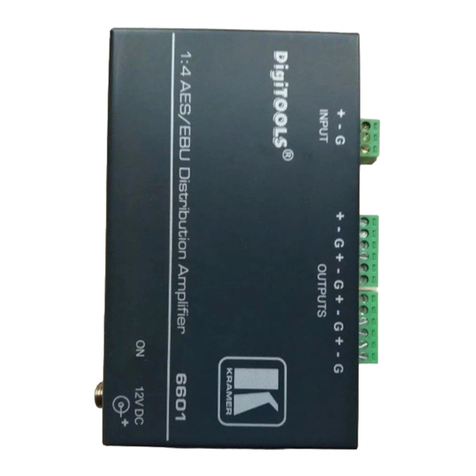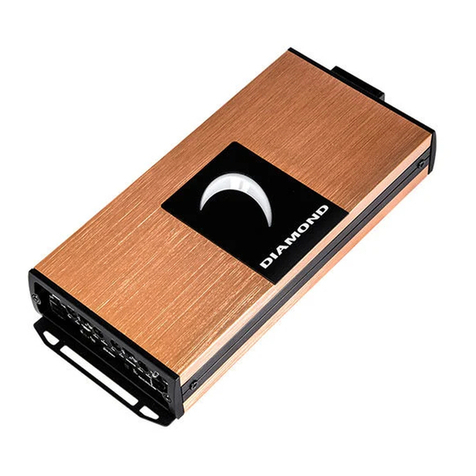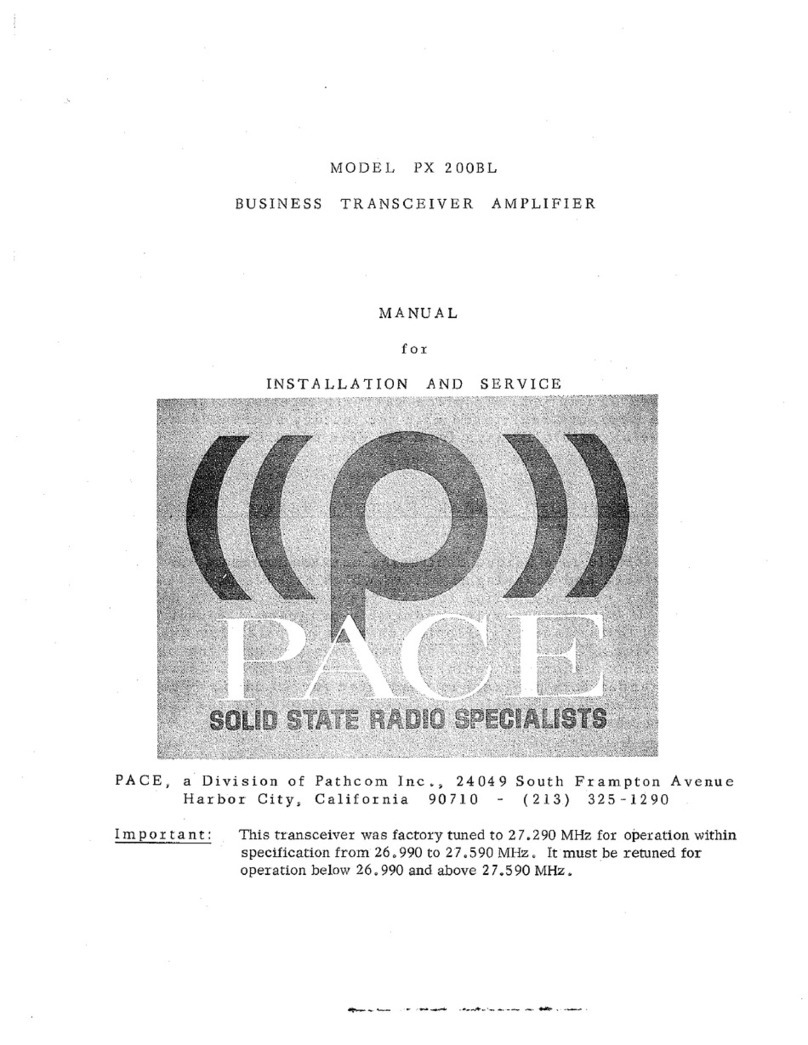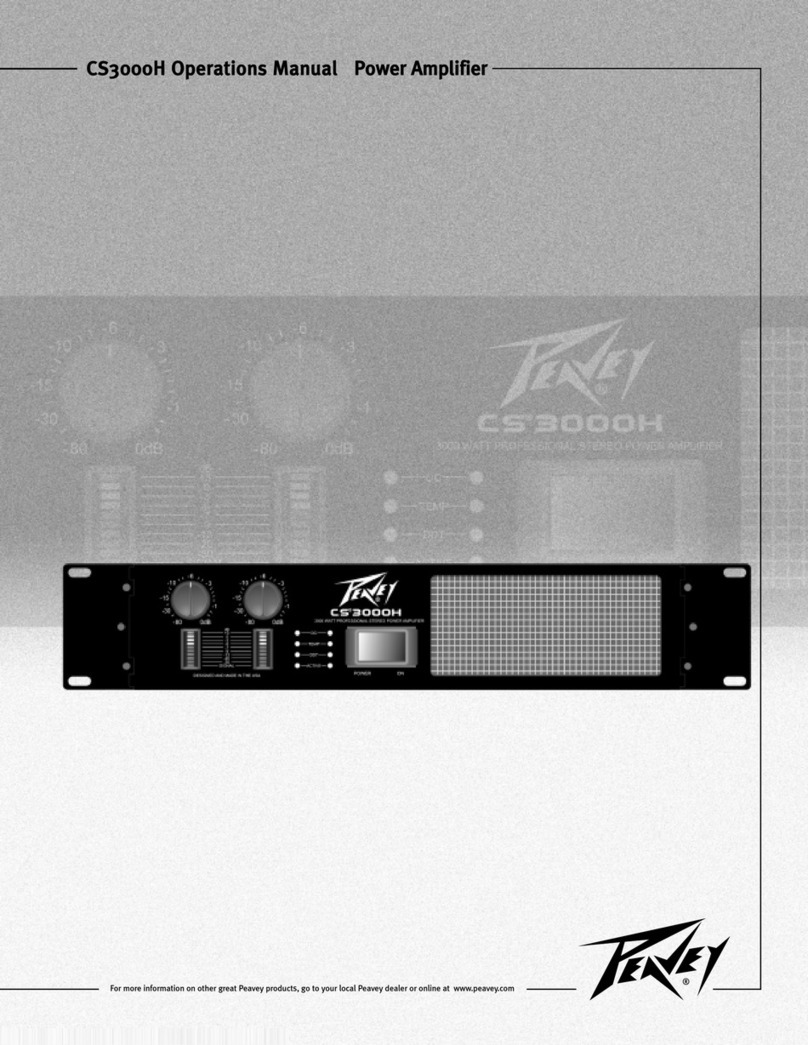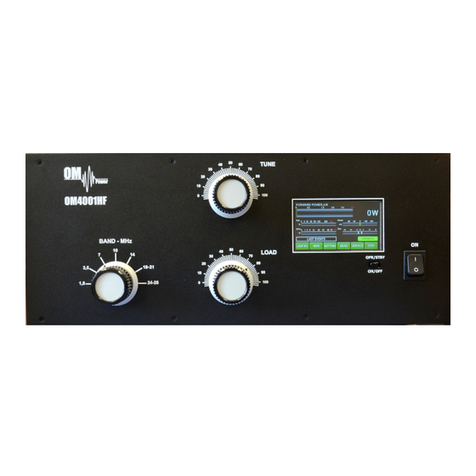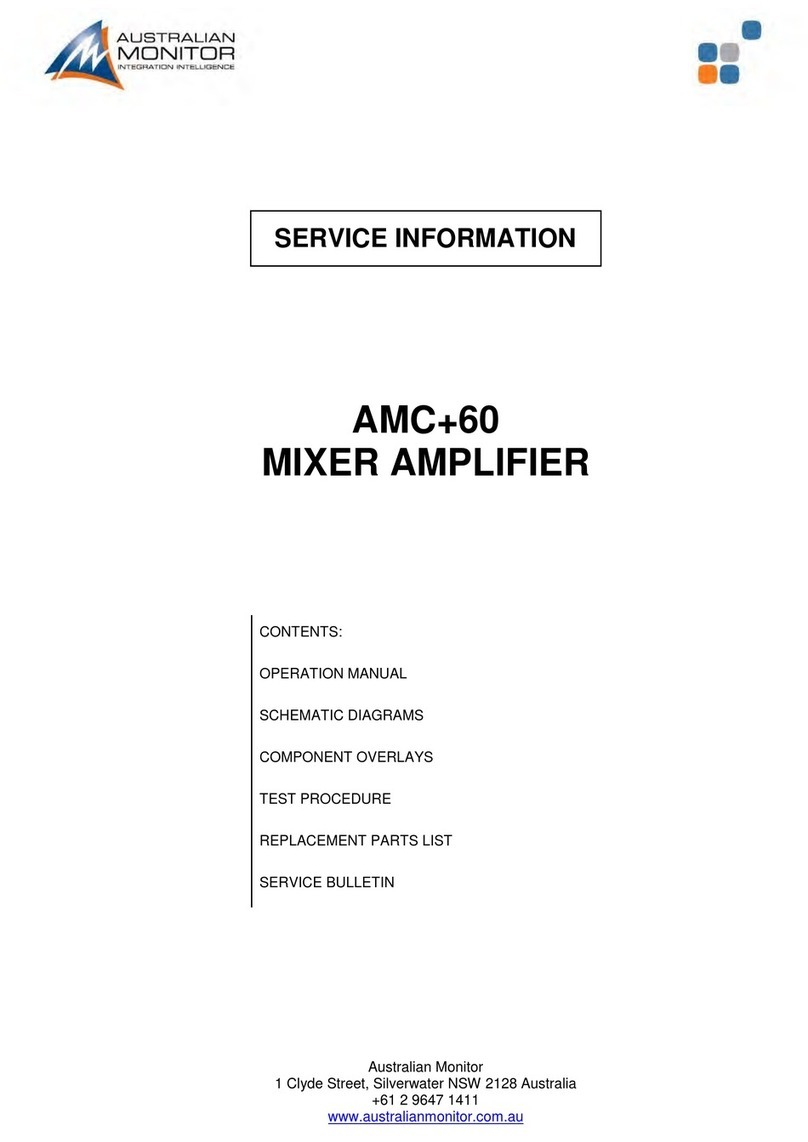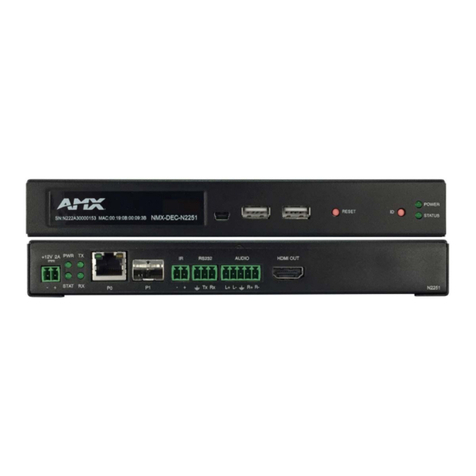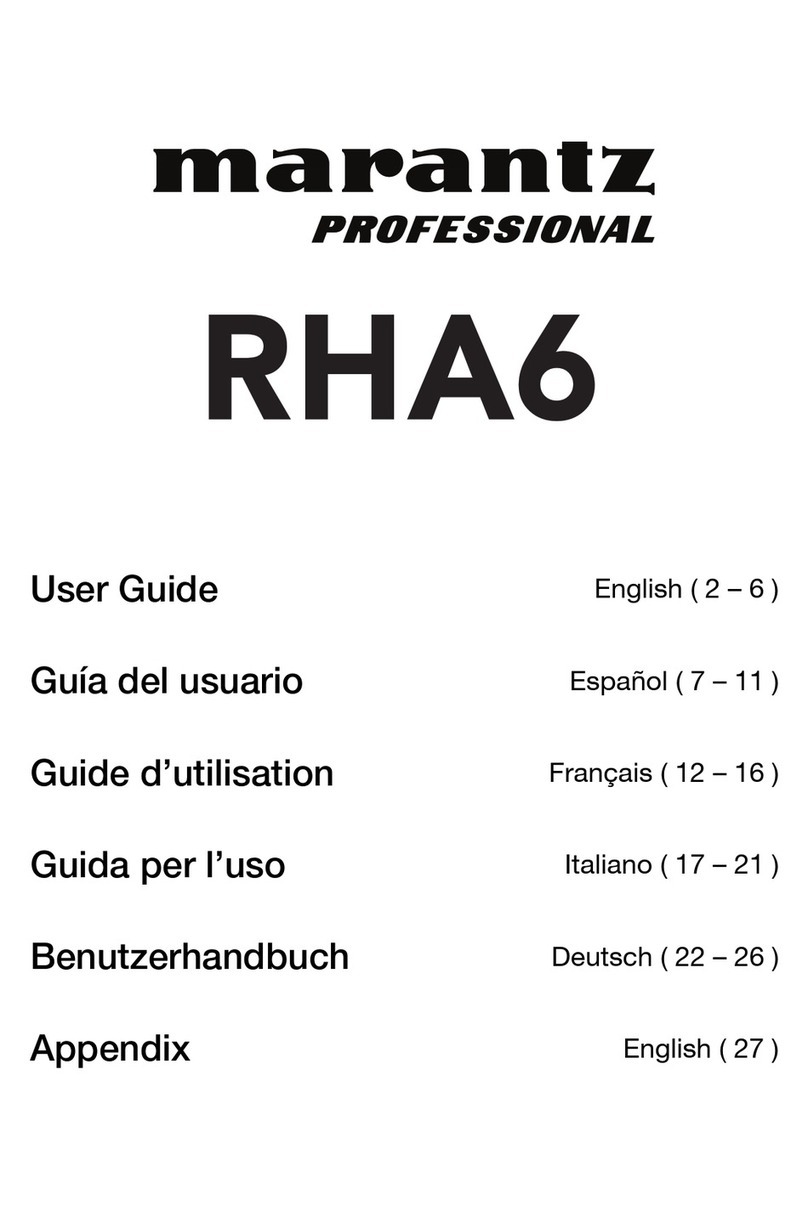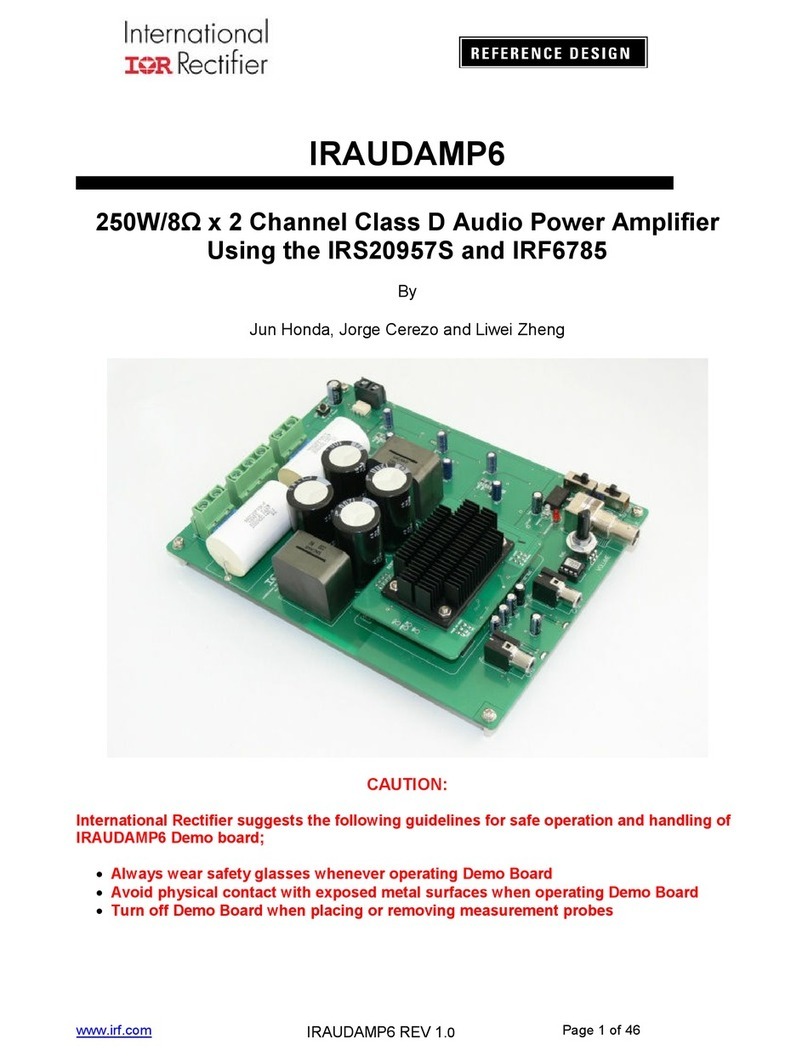Precision Analog Systems PAS 9406/AMP User manual

Revision A –05/12/15
PAS 9406/AMP
ENGINEERING SPECIFICATION
24 CHANNEL, +/- 30 VOLT,
+/- 200 mAMP, AMPLIFIER CARD
Rev A (05/12/15)

Precision Analog Systems (954) 587-0668 / www.precisionanalog.com
2
Additional copies of this manual or other Precision Analog Systems (PAS)
literature may be obtained from:
Precision Analog Systems Co.
1021 SW 75th Avenue
Plantation, Florida 33317
Phone: (954) 587-0668
The information in this document is subject to change without notice.
PAS makes no warranty of any kind with regard to this material, including, but not
limited to, the implied warranties of merchantability and fitness for a particular
purpose. Although extensive editing and reviews are performed before release,
PAS assumes no responsibility for any errors that may exist in this document.
No commitment is made to update or keep current the information contained in
this document.
PAS does not assume any liability arising out of the application or use of any
product or circuit described herein, nor is any license conveyed under any patent
rights or any rights of others.
PAS assumes no responsibility resulting from omissions or errors in this manual,
or from the use of information contained herein.
PAS reserves the right to make any changes, without notice, to this product to
improve reliability, performance, function or design.
All rights reserved.

Precision Analog Systems (954) 587-0668 / www.precisionanalog.com
3
24 Channel, +/- 30Volt,
+/- 200 mAmp Amplifier Card
TABLE OF CONTENTS
Section Title Page
I INTRODUCTION 5
General Description 5
Card Features 6
II SPECIFICATIONS 7
Electrical Specifications 7
Environmental Specifications 8
Physical Specifications 8
III CIRCUIT DESCRIPTION 11
IV POWER DISSIPATION AND 12
POWER SUPPLY REQUIREMENTS

Precision Analog Systems (954) 587-0668 / www.precisionanalog.com
4
24 Channel, +/- 30 Volt,
+/- 200 mAmp Amplifier Card
LIST OF TABLES
Table Title Page
1 P1 Connector Definitions 9
2 P2 Connection Definitions 10

Precision Analog Systems (954) 587-0668 / www.precisionanalog.com
5
I. INTRODUCTION
GENERAL DESCRIPTION
The PAS 9406/AMP provides twenty four channels of voltage amplification on
a 1U x 19” rack mountable panel. Two PCBs with 12 channels each are
mounted on the panel. Different types of amplifier boards can be mounted in
the different locations on the panel to tailor the amplifier to your application.
The integrated circuit amplifier used in this design is the OPA551 by Texas
Instruments. This amplifier can use power supply voltages from +/- 4 Volts to
+/- 30 Volts. The output current rating is 200 mAmps continuous. These
amplifiers can be used to significantly boost the output voltage and current
drive capability of a standard analog output card.
The board provides an offset voltage that can be connected to specific
channels to give them a different voltage transfer characteristic. In one case a
speed sensor was being simulated with the amplifier. When 0.0 Volts was
input to the card, the amplifier would output 1.4 Volts. When 3.8 Volts was
input to the card, the amplifier would output 2.8 Volts. This type of transfer
function is only possible by adjusting both the gain and offset of the amplifier
circuit. Not all of the amplifier circuits need to be connected to the offset
voltage. Jumpers are used to either select the offset voltage or 0.0 volts of
offset. Custom versions of the card are available, so the customer can select
any gain and offset required for each channel.
The amplifiers on this board use solder on heat sinks to increase the power
dissipation. The OPA551 provides thermal shutdown and output current
limiting to fully protect the amplifier. Each application that involves high
current and voltage needs to be evaluated to make sure the amplifiers power
dissipation is not exceeded. See the power dissipation calculation section
near the end of this manual.

Precision Analog Systems (954) 587-0668 / www.precisionanalog.com
6
Card Features: PAS 9406/AMP
24 Channels of voltage amplification with optional offset voltage
Mounts on standard 19” cabinet rails and requires 1 ¾ “ of vertical rack
space
Each panel mounts 2 amplifier boards with 12 channels each
Input and Output signals available on DB37 connectors
Thermal shut down and over current protection provided by the OPA551
op-amp.
Custom versions available

Precision Analog Systems (954) 587-0668 / www.precisionanalog.com
7
II. SPECIFICATIONS
Electrical Specifications
Each panel provides mounting locations for two boards. These electrical specifications
are for one board.
PAS 9406/AMP-000 Specifications
Number of channels 12
Transfer characteristics
CH 0-3 Gain = 1
CH 4 Speed Sensor
CH 5 Gain = 1
CH 6-8 Speed Sensor
CH 9-11 Gain = 2.7
Speed Sensor Characteristics 0.0 Volts In = 1.4 Volts Out
3.8 Volts In = 2.8 Volts Out
Amplifier Type OPA551
Maximum Output Current 200 mAmps
Maximum Power Supply +/- 30 Volts Typical, 60 Volt Spread
PAS 9406/AMP-000 Specifications
Number of channels 2
Transfer characteristics
CH 0-1 Gain = 2.8
Amplifier Type OPA551
Maximum Output Current 200 mAmps
Maximum Power Supply +/- 30 Volts Typical, 60 Volt Spread

Precision Analog Systems (954) 587-0668 / www.precisionanalog.com
8
Environmental Specifications
Operating Temperature Range 0 to 55° C
Storage Temperature Range -20 to 85° C
Relative Humidity Range 20 % to 80 %, non-condensing
Physical Specifications
Length 19.0”
Height 1.75”
Depth 4.00”
Weight 2 lbs
Connectors
Input 2 Ea, DB37 Female
Output 2 Ea, DB37 Male

Precision Analog Systems (954) 587-0668 / www.precisionanalog.com
9
TABLE 1
P1 Connector Definitions
IN0LO
IN1LO
IN2LO
IN3LO
IN4LO
IN5LO
IN6LO
IN7LO
IN8LO
IN9LO
IN10LO
IN11LO
AGND
AGND
AGND
-PS
GND
+PS
20
21
22
23
24
25
26
27
28
29
30
31
32
33
34
35
36
37
1
2
3
4
5
6
7
8
9
10
11
12
13
14
15
16
17
18
19
IN0HI
IN1HI
IN2HI
IN3HI
IN4HI
IN5HI
IN6HI
IN7HI
IN8HI
IN9HI
IN10HI
IN11HI
AGND
AGND
AGND
GND
GND
GND
GND

Precision Analog Systems (954) 587-0668 / www.precisionanalog.com
10
TABLE 2
P2 Connector Definitions
AGND
AGND
AGND
AGND
AGND
AGND
AGND
AGND
AGND
AGND
AGND
AGND
AGND
AGND
AGND
-PS
GND
+PS
20
21
22
23
24
25
26
27
28
29
30
31
32
33
34
35
36
37
1
2
3
4
5
6
7
8
9
10
11
12
13
14
15
16
17
18
19
OUT0
OUT1
OUT2
OUT3
OUT4
OUT5
OUT6
OUT7
OUT8
OUT9
OUT10
OUT11
AGND
AGND
AGND
GND
GND
GND
GND

Precision Analog Systems (954) 587-0668 / www.precisionanalog.com
11
III. CIRCUIT DESCRIPTION
The PAS 9406/AMP-000 card contains 12 high power amplifier circuits. Channels
are configured to provide a gain of 1.0, 2.7 or a gain used to simulate a speed
sensor, with an output current drive of 100 mAmps. Output current and voltage
range will be increased significantly when compared with a standard analog
output card. Versions of this card with other gain values are also available.
The amplifiers used on this card are high voltage monolithic MOSFET
operational amplifiers. They deliver performance features previously only found
in hybrid designs, while increasing reliability. The amplifier part number is
OPA551, and they are built by Texas Instruments. Other versions of this card can
be built with the OPA458. The OPA551 has a maximum power supply voltage of
+/- 30 Volts, and a maximum output current of 200mA. The OPA458 has a
maximum power supply voltage of +/- 40 Volts, and a maximum output current of
50mA.
The OPA551 and OPA458 are packaged in TI’s DDPAC-7 and mounted with
heat sinks. This package with the heat sink has a typical thermal resistance of 25
°C per Watt from junction to air, and the device has a maximum junction
temperature of 125° C. Based on these parameters, the amplifier will dissipate a
maximum of 2.6 Watts, and should typically be operated at 2.00 Watts or less.

Precision Analog Systems (954) 587-0668 / www.precisionanalog.com
12
IV. POWER DISSIPATION AND
POWER SUPPLY REQUIREMENTS
In order to calculate the power dissipated by the amplifiers, the quiescent power
is added to the power dissipated by the output driver circuit; as shown in the
following expression; P (Total) = P (Quiescent) + P(Output Stage)
The maximum power will occur when the power supply voltage is at its maximum
of +/- 30 Volts. The amplifiers quiescent current is 8 mA which will produce 60
Volts x 8 mA = 480 mW of quiescent power. When the amplifiers are operated
with +/- 15 Volt power supplies, the quiescent power is 30 Volts x 8 mA = 240
mW.
The maximum load current the amplifier is guaranteed to output is 200 mA. In
this example, we will use 100 mAmp of load current. With +/- 30 Volt power
supplies and a 4 Volt drop across the output stage, the output voltage is +/- 26
Volts. The minimum load resistance is 26 Volts divided by 100 mA = 260 Ohms.
The maximum power dissipation in the amplifier occurs at half the power supply
voltage. As the output voltage increases from this point, the voltage across the
amplifier decreases. As the output voltage decreases from this point, the current
through the amplifier and the load decreases.
When the amplifier is driving this load to 26 Volts, it is delivering 2.6 Watts of
power to the load, and the amplifier is dissipating 400 mW. When the amplifier is
driving the load to half the power supply voltage, both the amplifier and the load
are dissipating 865 mWatts of power. This calculation is shown in the following
equation; 15 Volts x 15 Volts divided by 260 Ohms = 865 mWatts. In this
example the total power in the amplifier is 480 mW + 865 mW = 1345 mW.
The output amplifiers use heat sinks that provide a junction to air thermal
resistance of 25° C/W. The junction temperature of the amplifier should never
exceed 125° C, and is calculated by adding the ambient temperature to the
temperature rise caused by the power dissipation. The following expression
defines this temperature: TJ = TA + PDOJA. In the case of this example with an
ambient temperature of 60° C, the junction temperature would be; TJ = 60° +
(1.345 Watts x 25° C/W) = 94° C. This is below the maximum junction
temperature, so it is safe to operate the amplifier under these conditions.
When the amplifiers are operated from +/- 15 Volt power supplies, the maximum
output voltage is approximately +/- 11 Volts. At 100 mAmps of output current,
this translates into a minimum load resistance of 110 Ohms. At half the power
supply voltage, the output power in the amplifier is 7.5 Volts x 7.5 Volts divided
by 110 Ohms = 511 mW. The total power is 511 mW + 240 mW = 751 mW. This
puts the maximum junction temperature at about 18.7° above ambient.
Table of contents
Popular Amplifier manuals by other brands
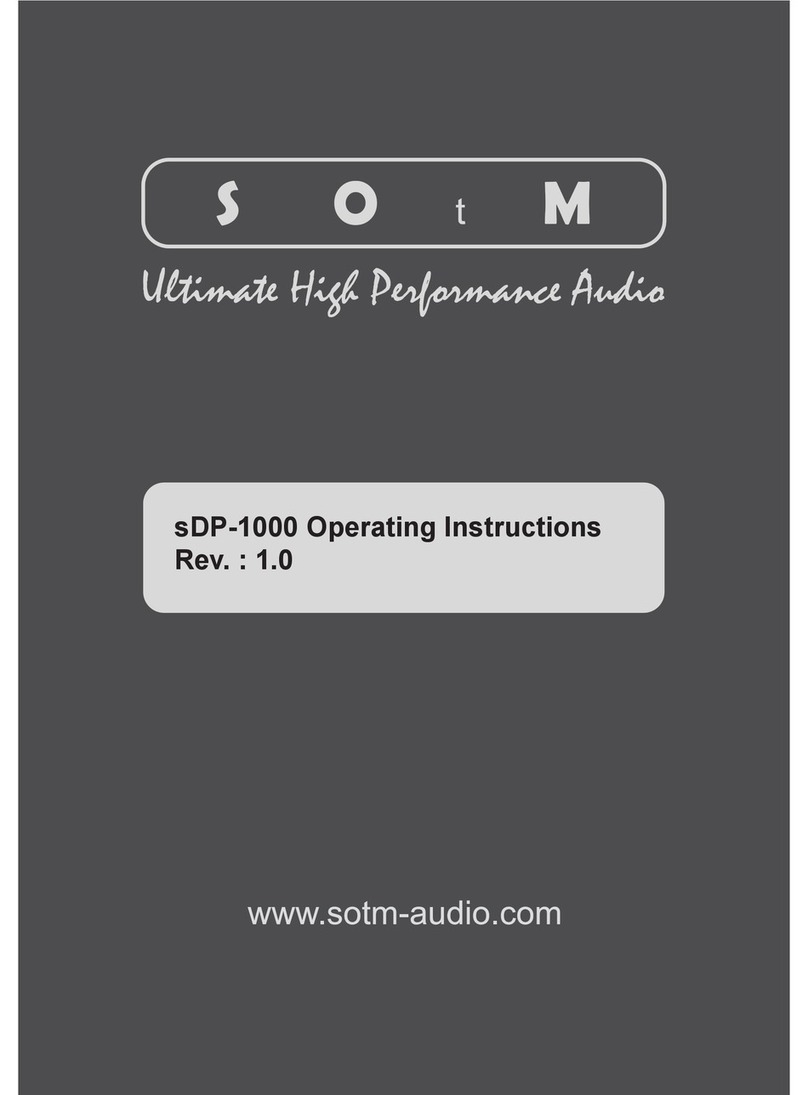
SOtM
SOtM sDP-1000 operating instructions
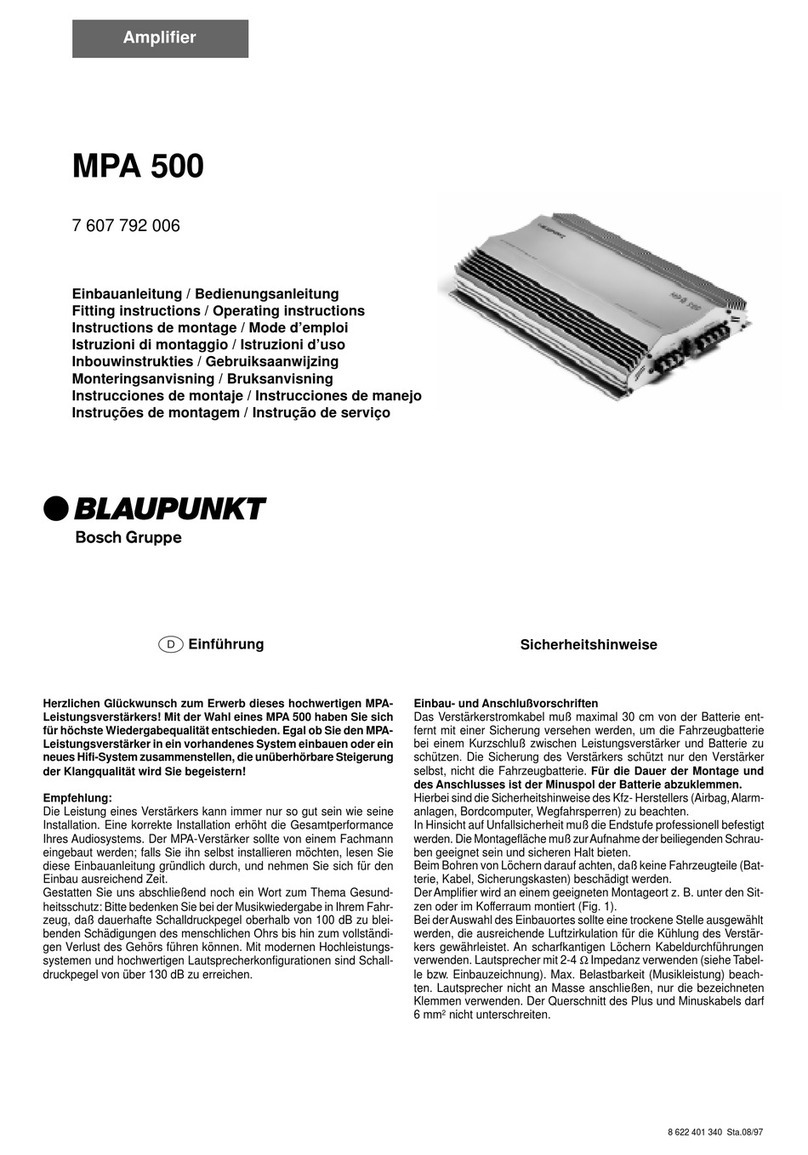
Blaupunkt
Blaupunkt MPA 500 Fitting instructions / operating instructions
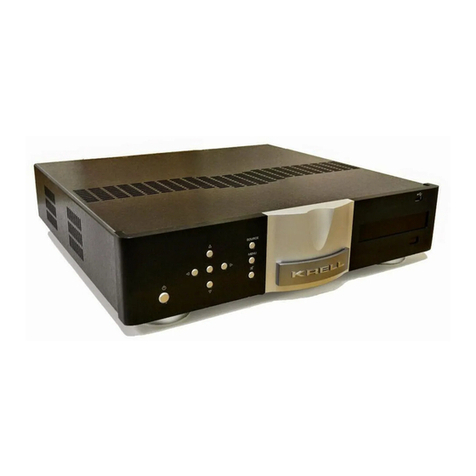
Krell Industries
Krell Industries Vanguard Series Owner's reference
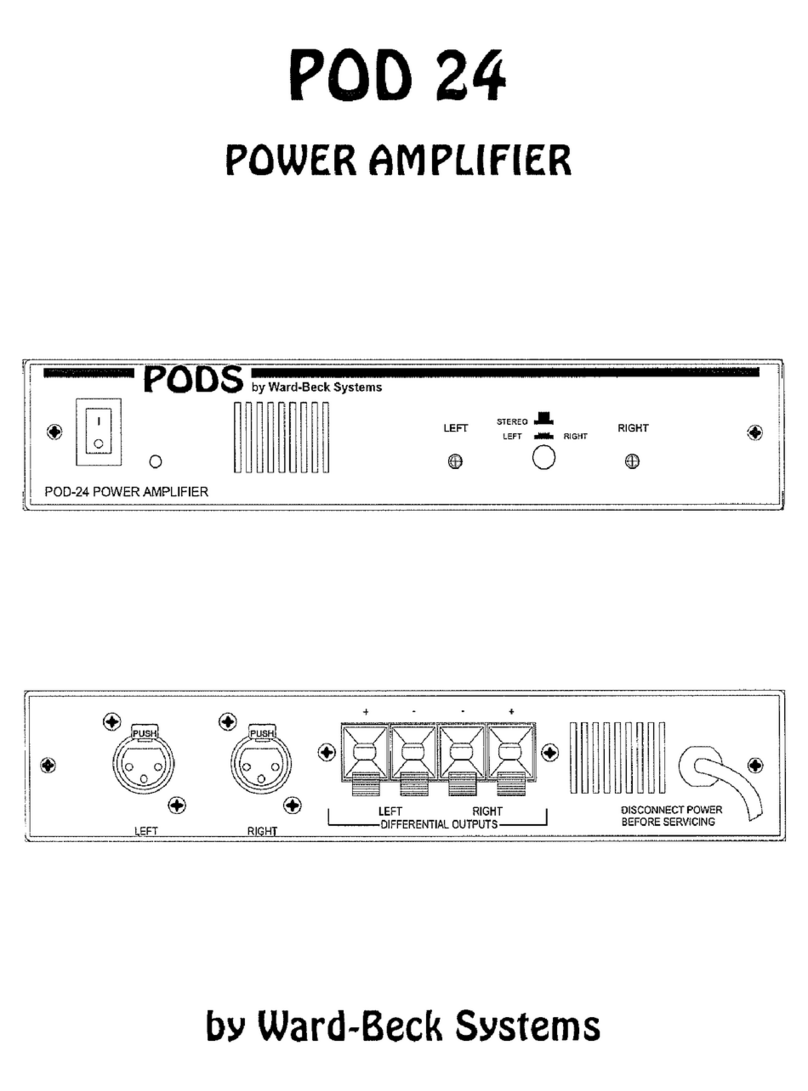
Ward-Beck Systems
Ward-Beck Systems POD 24 manual
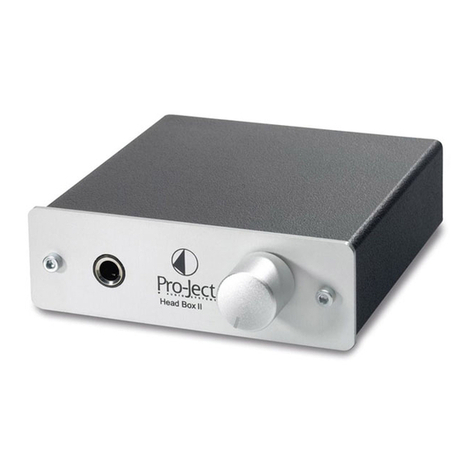
Pro-Ject Audio Systems
Pro-Ject Audio Systems Head Box II Instructions for use

Velleman
Velleman HQ Power VPA2200MBN user manual
